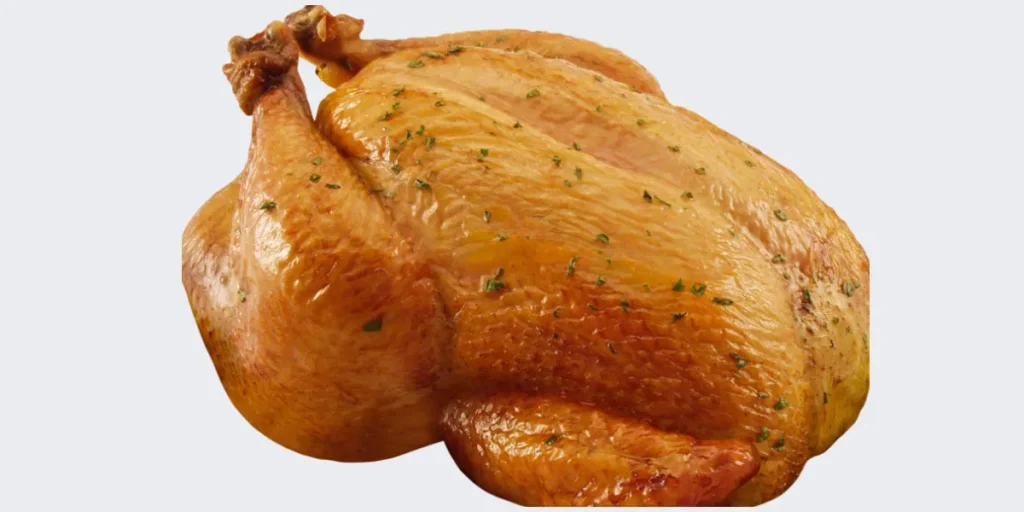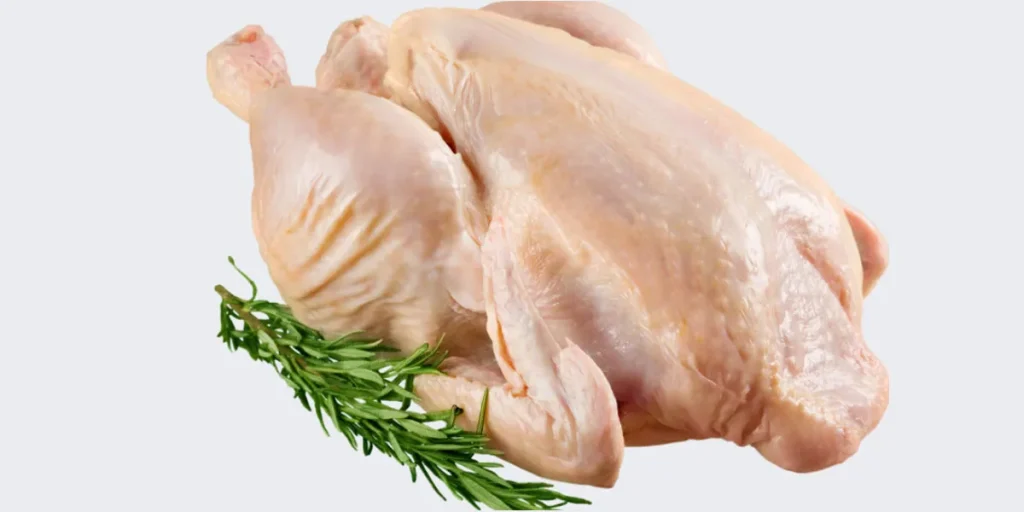An average chicken typically weighs between 1.5 to 8 pounds. The exact weight varies by breed, sex, and age.
Understanding the weight of a chicken is essential for both farmers and backyard poultry enthusiasts. Different breeds of chickens have varying sizes and weights.
For instance, bantam chickens are small and can weigh as little as 1. 5 pounds, while larger breeds like Jersey Giants can tip the scales at over 8 pounds.
The weight of a chicken is not only indicative of its health and well-being but also influences the type of care it requires, including nutrition and habitat considerations.
Poultry weight is also a critical factor for those raising birds for meat production, as it directly impacts yield and market value.
Tracking the growth rates of chickens can help in managing their feed and identifying any potential health issues early on, ensuring the poultry remain healthy and productive.

Fascinating World Of Poultry
Welcome to The Fascinating World of Poultry, an enchanting realm where the ordinary chicken becomes a subject of intrigue and wonder.
Chickens are more than just farm animals; they’re a diverse group with a variety of breeds, sizes, and habits that can leave us in awe.
Diverse Breeds, Diverse Sizes
Chickens come in an array of shapes and sizes. This diversity stems from the countless breeds found around the globe.
Each breed exhibits unique characteristics, including distinct weight ranges.
| Breed | Weight Range |
|---|---|
| Bantam | 1-2 lbs |
| Leghorn | 5-7 lbs |
| Rhode Island Red | 6.5-8.5 lbs |
| Brahma | 10-12 lbs |
From the petite Bantam to the towering Brahma, poultry enthusiasts cherish the variety and personality every breed brings to the barnyard.
Farmyard Birds Vs. Wild Cousins
When considering the weight of chickens, we must recognize the distinction between domesticated farmyard birds and their wild relatives.
Farmyard chickens are often heftier due to selective breeding for meat and egg production.
- Domesticated Chickens: Selected for size, docility, and productivity.
- Wild Fowl: Adapted for survival, often smaller and more agile.
Wild fowl, such as the Red Junglefowl, ancestor of the domestic chicken, generally weigh less, adept at flying and evading predators.
In contrast, domestic chickens are bred to meet human needs, leading to greater weights and reduced flight capability.
Chickens On The Scale

Ever wondered how much a chicken weighs? Step right up to the feather-filled scale! We’ll dive into the intriguing world of poultry poundage and see exactly where chickens fall on the weight spectrum.
Not all birds are created equal; hence, their weight can vary as much as their colorful feathers do!
Average Weights Across Breeds
Chickens come in an array of sizes, each breed bringing its own average weight to the table. Let’s look closer:
| Breed | Typical Weight Range |
|---|---|
| Bantam | 1 to 2 lbs (0.45 to 0.9 kg) |
| Leghorn | 4.5 to 6 lbs (2 to 2.72 kg) |
| Plymouth Rock | 7 to 8 lbs (3.17 to 3.62 kg) |
| Jersey Giant | 10 to 15 lbs (4.54 to 6.8 kg) |
Factors Influencing A Chicken’s Weight
Several elements impact the heaviness of these birds:
- Genetics: Just as in humans, a chicken’s genes play a key role in determining their size.
- Diet: The quality and quantity of feed can significantly affect weight.
- Health: Parasites and diseases might cause weight fluctuation.
- Age: Chickens grow heavier as they mature.
- Activity Level: More active birds may be leaner.
Measuring Up The Birds
An intriguing aspect of backyard farming involves understanding the weight of your feathered friends.
‘Measuring Up the Birds’ offers a fascinating insight into the lives of chickens as they grow from tiny chicks into majestic roosters or hens.
Knowing the weight of your poultry is crucial for health monitoring and efficient farming, and in this section, we’ll explore how chicken weights evolve over time and how to precisely measure them.
From Chicks To Roosters: Growth Chart
A chicken’s growth is a journey from a fragile chick to a full-sized bird. Let’s delve into the different stages:
| Age (Weeks) | Typical Weight Range | Development Stage |
|---|---|---|
| 1-4 | 0.5 – 1 lb | Chicks gain feathers |
| 5-15 | 1 – 4 lbs | Teen phase, growth spurt |
| 16-20 | 4 – 5 lbs | Hens start laying eggs |
| 21+ | 5 – 8 lbs | Roosters reach full size |
Tools And Techniques For Weighing Poultry
Gaining accurate weight measurements requires specific tools and methods. Here are some pointers:
- Digital Kitchen Scale: Ideal for small chicks and hens. Ensure it’s calibrated.
- Poultry-Specific Scale: Suitable for larger birds. Offers restraint features.
- Practice: Calm the bird before weighing for a steady reading.
Remember to record weight regularly. This allows for proactive health management and diet adjustments.
A consistent approach reveals any potential issues quickly, enabling prompt action.
Heft And Health: Interlinked

Paying attention to a chicken’s weight tells a lot about its health. Each breed has its own normal weight range.
Just like with humans, being underweight or overweight can mean health problems. Knowing the right weight can help keep chickens happy and healthy.
Let’s explore how diet and environment impact their well-being.
Optimal Weight Ranges For Well-being
Chickens come in many sizes. Certain factors determine how much a healthy chicken weighs.
- Breed: Larger breeds like Orpingtons weigh more than smaller ones like Bantams.
- Age: Adult chickens weigh more than chicks.
- Gender: Roosters are typically heavier than hens.
| Breed Type | Average Weight Range |
|---|---|
| Bantam | 1 – 2 lbs (0.45 – 0.91 kg) |
| Layer Hen | 5 – 6 lbs (2.27 – 2.72 kg) |
| Standard Rooster | 8 – 10 lbs (3.63 – 4.54 kg) |
Check with a vet or look up specific breed standards to find the right weight for your chicken.
Impact Of Diet And Environment
The type of food a chicken eats affects its weight. Fresh greens, grains, and proper feed lead to a healthy weight. Poor diet can cause weight issues.
Chickens need space to move, good air, and sunlight to stay fit. Here’s how to ensure their environment supports their health:
- Spacious Coop: Allows plenty of room to exercise.
- Quality Feed: Provides the nutrition they need.
- Clean Water: Access to fresh water is essential.
- Natural Light: Helps with vitamin D and overall well-being.
A balanced diet and the right living conditions prevent health issues like obesity or weakness. Keep their home clean and feed them well for a happy flock.
Heaviest Chickens On Record
Imagine a chicken as heavy as a small dog! This is not a fable but, in fact, a fascinating reality in the world of giant poultry.
The heaviest chickens strut with remarkable size, tipping the scales and setting records. Let’s dive into the world of these feathered giants.
Remarkable Records
Jersey Giants and Brahmas often break records for their impressive weight. A hefty hen or a bulky rooster can astonish with their measurements. It’s all in the numbers:
| Chicken Breed | Average Weight (Pounds) |
|---|---|
| Jersey Giant | 13-15 |
| Brahma | 10-12 |
| Cochin | 8-11 |
Champion Chickens
Record-breaking chickens become celebrities, their names known worldwide. Big Boy, a Jersey Giant, once weighed in at an astonishing 23 pounds. Here’s a brief list of past champions:
- Big Boy – Jersey Giant Rooster
- Henrietta – Cochin Hen
- King Kong – Brahma Rooster
Genetics And Giant Birds
The secret behind these behemoths lies in their DNA. Selective breeding has led to the evolution of these mega-chickens.
Breeders specifically choose the biggest birds of the flock to breed. This results in offspring that grow larger with each generation.
It’s a science and art form, uniting to create these feathered giants.
- Selective breeding helps chickens grow bigger.
- Genetic traits are passed down to each new chick.
- Breeders aim for size, strength, and health.
Practical Insights For Poultry Keepers
Understanding the weight of your chickens is crucial in managing a healthy flock. Knowledge about normal weight ranges helps in maintaining their well-being.
This post provides key information on monitoring and responding to weight changes in backyard chickens.
Monitoring Weight For Backyard Flocks
Monitoring the weight of chickens in a backyard environment is straightforward. Use these steps:
- Choose a regular schedule (weekly or monthly).
- Use a kitchen scale or a special poultry scale.
- Record the weight for trends over time.
Compare weights with standard charts for the breed. This helps in recognizing any deviations early.
When To Be Concerned? Weight Loss And Gain
Variations in chicken weight can signal issues:
| Weight Loss | Weight Gain |
|---|---|
|
|
Take action if your chicken’s weight changes rapidly. Consult a vet for expert advice.
FAQs About the Weight of a Chicken
What’s The Average Weight Of A Chicken?
The average weight of a chicken depends on its breed and age. Typically, hens weigh about 5. 5 pounds, while roosters average around 8. 5 pounds. Bantam breeds can be as light as 2 pounds.
Can Chicken Breeds Affect Weight?
Yes, chicken breeds significantly affect weight. For instance, Bantams often weigh less than larger breeds like Jersey Giants, which can reach over 13 pounds.
How Much Does A Broiler Chicken Weigh?
Broiler chickens, raised for meat, are bred to grow quickly and can reach an average weight of 6 pounds within 6 to 8 weeks.
What Factors Influence A Chicken’s Weight?
A chicken’s weight can be influenced by its diet, exercise, health, and living conditions. Genetics also play a crucial role in determining chicken weight.
Conclusion
Understanding the weight of a chicken is no small matter for farmers, chefs, and curious minds alike.
Generally, chickens tip the scales at 1. 5 to 8 pounds, depending on the breed and age. Embracing this knowledge ensures responsible raising, precise cooking, and informed consumption.
Let’s weigh our approach to poultry with this essential insight.
Resources:
https://www.cdc.gov/foodsafety/chicken.html
https://www.fsis.usda.gov/food-safety/safe-food-handling-and-preparation/poultry/chicken-farm-table
